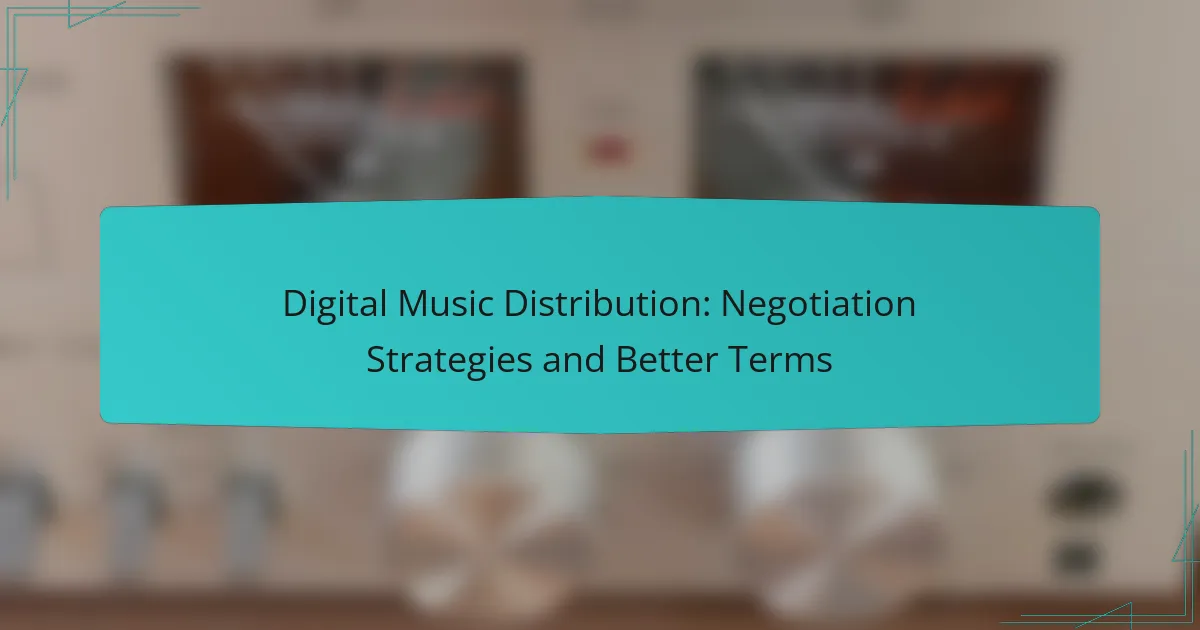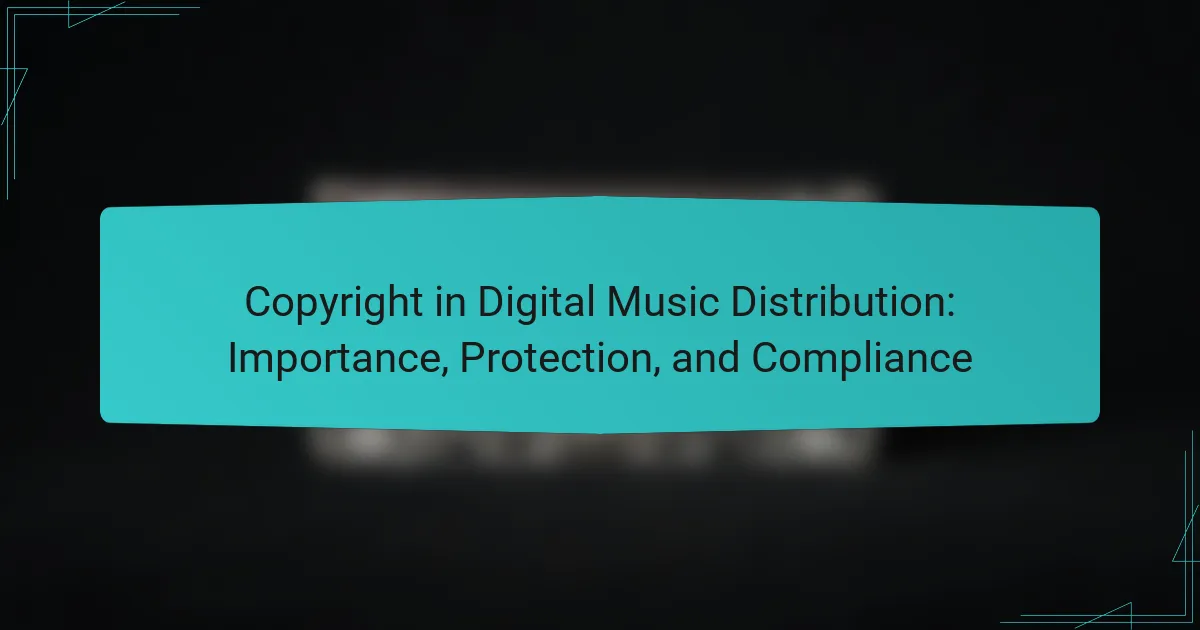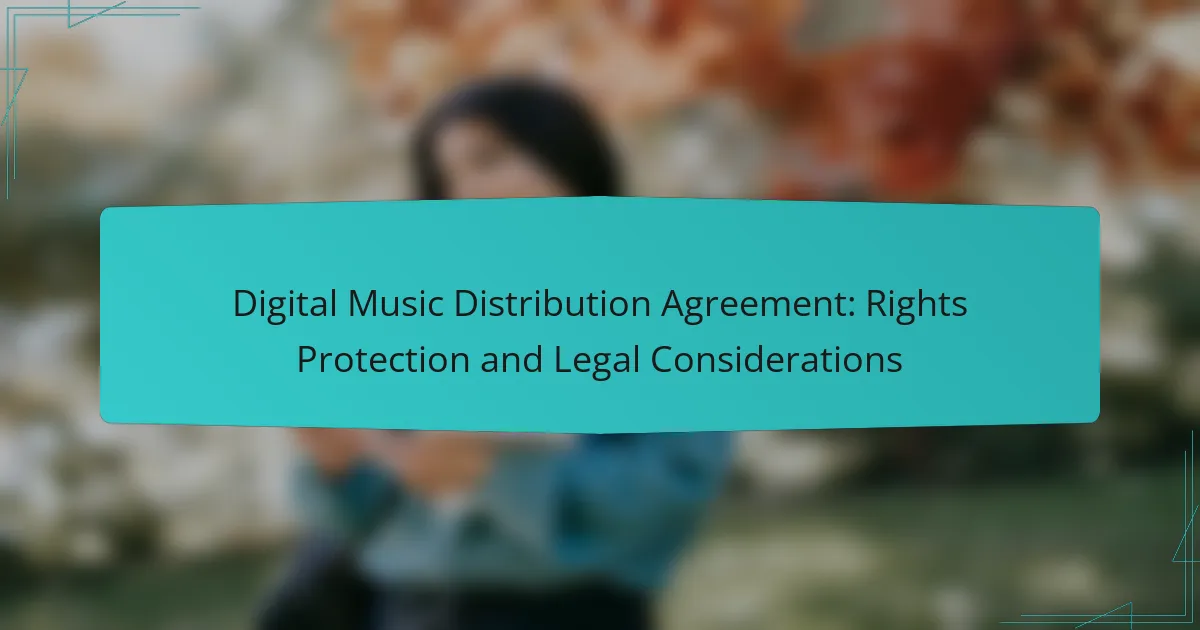International distribution agreements are vital for musicians seeking to expand their reach and revenue in global markets. These agreements encompass key elements such as territory definition, royalty structures, and dispute resolution, which are essential for protecting artists’ rights. By understanding and negotiating these terms effectively, musicians can enhance their visibility and tap into diverse audiences worldwide.
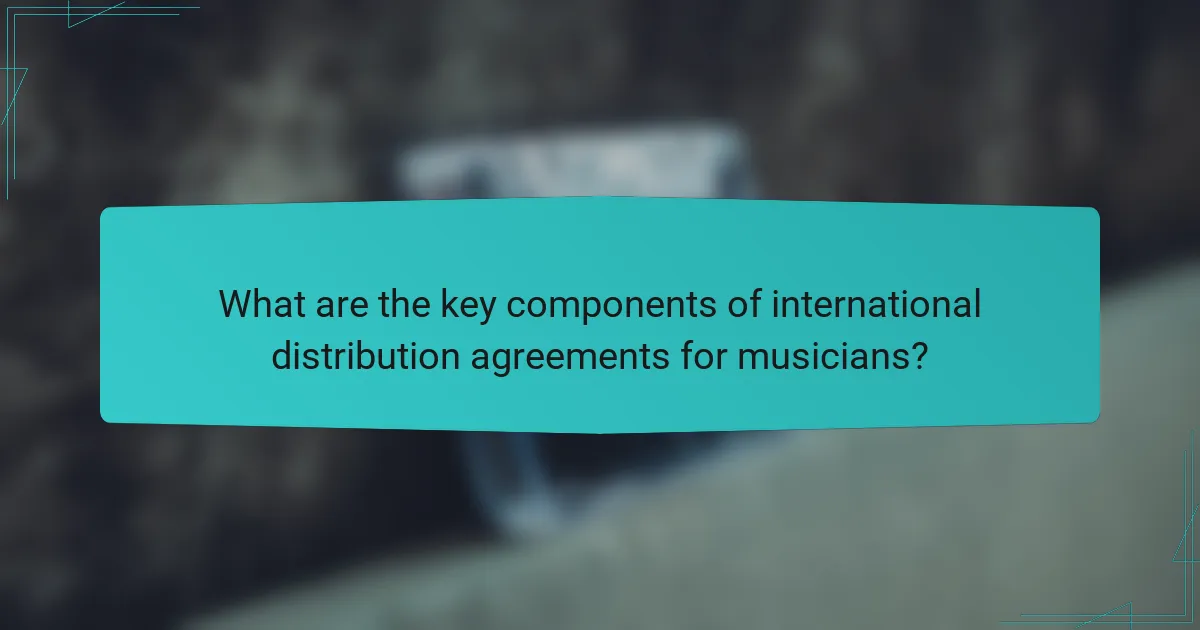
What are the key components of international distribution agreements for musicians?
International distribution agreements for musicians typically include essential components such as territory definition, royalty structures, duration, termination clauses, and dispute resolution mechanisms. Understanding these elements is crucial for musicians to protect their rights and maximize their revenue in global markets.
Territory definition
The territory definition in an international distribution agreement specifies the geographical areas where the distributor has the rights to promote and sell the musician’s work. This can range from specific countries to entire regions, such as Europe or Asia. Musicians should carefully consider which territories they want to include, as this affects market reach and potential earnings.
For example, a musician may choose to grant distribution rights in Europe but retain rights in North America for themselves. This strategic decision can help them maintain control over their music in key markets.
Royalty structures
Royalty structures outline how musicians will be compensated for their work, typically expressed as a percentage of sales or a fixed fee per unit sold. Common royalty rates for digital distribution can range from 15% to 50%, depending on the agreement’s terms and the distributor’s services. Musicians should negotiate favorable rates to ensure fair compensation.
Additionally, it’s important to clarify how royalties are calculated, including deductions for costs such as marketing or distribution fees. Understanding these details can prevent disputes later on.
Duration of agreement
The duration of an international distribution agreement specifies how long the distributor will have the rights to distribute the musician’s work. This period can vary widely, from a few years to indefinite terms, depending on the agreement. Musicians should consider their career plans and the potential for future releases when negotiating duration.
Shorter agreements may allow for more flexibility, enabling musicians to reassess their distribution strategy sooner. However, longer agreements might provide stability and potentially better terms if the distributor is successful.
Termination clauses
Termination clauses outline the conditions under which either party can end the agreement. These clauses are crucial for protecting musicians, as they provide an exit strategy if the distributor fails to meet performance expectations or if the relationship becomes unworkable. Common conditions for termination include breach of contract, failure to pay royalties, or lack of promotion.
Musicians should ensure that the termination process is clearly defined, including notice periods and any obligations that remain after termination, such as the handling of unsold inventory.
Dispute resolution mechanisms
Dispute resolution mechanisms detail how conflicts between the musician and distributor will be handled. This can include mediation, arbitration, or litigation, with specific procedures outlined for each method. Choosing the right mechanism can save time and costs compared to traditional court proceedings.
Musicians should consider including clauses that specify the governing law and jurisdiction, especially when dealing with international agreements, to avoid complications arising from differing legal systems.

How do musicians benefit from international distribution agreements?
Musicians benefit from international distribution agreements by gaining access to broader markets, which can significantly enhance their visibility and revenue. These agreements facilitate the distribution of music across different countries, allowing artists to tap into diverse audiences and revenue opportunities.
Expanded market reach
International distribution agreements enable musicians to expand their market reach beyond their home country. By partnering with distributors who have established networks in various regions, artists can ensure their music is available on multiple platforms worldwide.
This expanded reach can lead to increased sales and streaming numbers, as fans from different cultures and backgrounds discover the artist’s work. For example, a musician from the United States can access markets in Europe, Asia, and Latin America, significantly broadening their audience base.
Increased revenue streams
With international distribution, musicians can tap into multiple revenue streams, including digital sales, streaming royalties, and physical sales in different countries. Each market may offer unique monetization opportunities, such as licensing for local media or performance rights.
For instance, a song that becomes popular in Europe may generate substantial streaming revenue in Euros, while physical sales in Asia can add to overall income. Musicians should consider the potential of different markets and tailor their strategies accordingly to maximize earnings.
Access to global audiences
International distribution agreements provide musicians with access to global audiences, allowing them to connect with fans around the world. This exposure can lead to increased fan engagement, social media following, and concert opportunities in new regions.
Artists can leverage this access by promoting their music through targeted marketing campaigns that resonate with specific cultural contexts. For example, collaborating with local artists or participating in international music festivals can enhance visibility and foster a loyal fanbase across borders.

What are the common pitfalls in international distribution agreements?
Common pitfalls in international distribution agreements include unclear terms, inadequate legal representation, and a failure to understand local laws. Addressing these issues is crucial for musicians to protect their rights and ensure fair compensation across different markets.
Unclear terms
Unclear terms in an international distribution agreement can lead to misunderstandings and disputes. Musicians should ensure that all key aspects, such as payment structures, rights granted, and duration of the agreement, are explicitly defined. Ambiguities can result in financial losses or loss of control over creative works.
To avoid this pitfall, consider creating a checklist of essential terms to clarify, such as royalties, distribution territories, and marketing responsibilities. Engaging in discussions to confirm mutual understanding can prevent future conflicts.
Inadequate legal representation
Inadequate legal representation can severely impact a musician’s ability to navigate complex international agreements. Musicians should seek legal counsel experienced in international law and music distribution to ensure their interests are protected. Without proper guidance, they may overlook critical clauses or fail to negotiate favorable terms.
When selecting a legal representative, prioritize those with a proven track record in the music industry. This expertise can help identify potential pitfalls and negotiate terms that align with the musician’s goals.
Failure to understand local laws
Failure to understand local laws can lead to compliance issues and unexpected liabilities in international distribution agreements. Each country has its own regulations regarding copyright, royalties, and distribution practices, which can significantly affect a musician’s earnings and rights.
Musicians should research the legal landscape of the countries they are distributing in. Consulting with local legal experts can provide insights into specific regulations, ensuring that agreements comply with local laws and protecting the musician’s interests.

What are the best practices for negotiating international distribution agreements?
Best practices for negotiating international distribution agreements include thorough preparation, clear communication of goals, and seeking professional guidance. These steps help ensure that musicians secure favorable terms and protect their rights across different markets.
Research potential partners
Identifying the right distribution partner is crucial for success in international markets. Look for companies with a proven track record in your genre and region, as well as a strong network of contacts in the local music industry.
Consider factors such as their distribution channels, marketing capabilities, and reputation among artists. Engaging with other musicians who have worked with potential partners can provide valuable insights into their reliability and effectiveness.
Define clear objectives
Establishing clear objectives is essential for guiding negotiations and ensuring alignment with your artistic and commercial goals. Determine what you want to achieve, whether it’s maximizing revenue, expanding your audience, or gaining access to specific territories.
Communicate these objectives clearly during negotiations to avoid misunderstandings. For example, if your priority is to maintain creative control, ensure that this is reflected in the agreement’s terms.
Seek legal advice
Engaging a legal professional with experience in international distribution agreements is highly recommended. They can help you navigate complex legal frameworks, protect your intellectual property, and ensure compliance with local regulations.
Legal advice can also assist in negotiating terms that are favorable to you, such as royalty rates and rights reversion clauses. Avoid the pitfall of signing agreements without fully understanding the implications, as this can lead to costly disputes in the future.
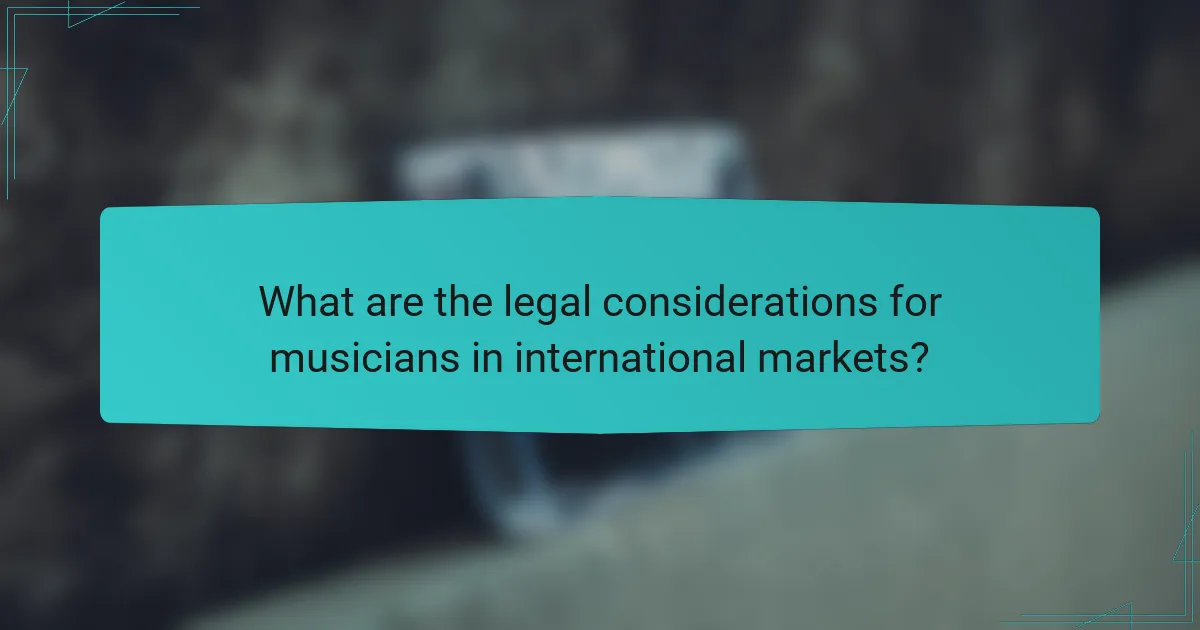
What are the legal considerations for musicians in international markets?
Musicians entering international markets must navigate various legal considerations, including copyright laws, licensing requirements, and tax implications. Understanding these factors is essential for protecting intellectual property and ensuring compliance with local regulations.
Copyright laws
Copyright laws vary significantly across countries, impacting how musicians protect their work internationally. In many jurisdictions, copyright grants exclusive rights to reproduce, distribute, and perform music, but the duration and specifics can differ widely.
Musicians should register their works in key markets to strengthen their legal standing. For example, the Berne Convention provides a framework for copyright protection among member countries, but local laws may still impose unique requirements.
Licensing requirements
Licensing is crucial for musicians looking to distribute their music internationally. Different countries may require specific licenses for various forms of distribution, such as digital streaming, physical sales, or public performance.
It is advisable to work with local music rights organizations to navigate these licensing requirements. For instance, in the EU, the Collective Management Organizations (CMOs) help manage rights and ensure proper compensation for artists.
Tax implications
Tax implications can significantly affect musicians operating in international markets. Many countries impose withholding taxes on royalties, which can range from 0% to over 30%, depending on the tax treaties in place.
Musicians should consult with tax professionals familiar with international tax laws to optimize their tax liabilities. Understanding local tax obligations can help avoid unexpected costs and ensure compliance with regulations in each market.
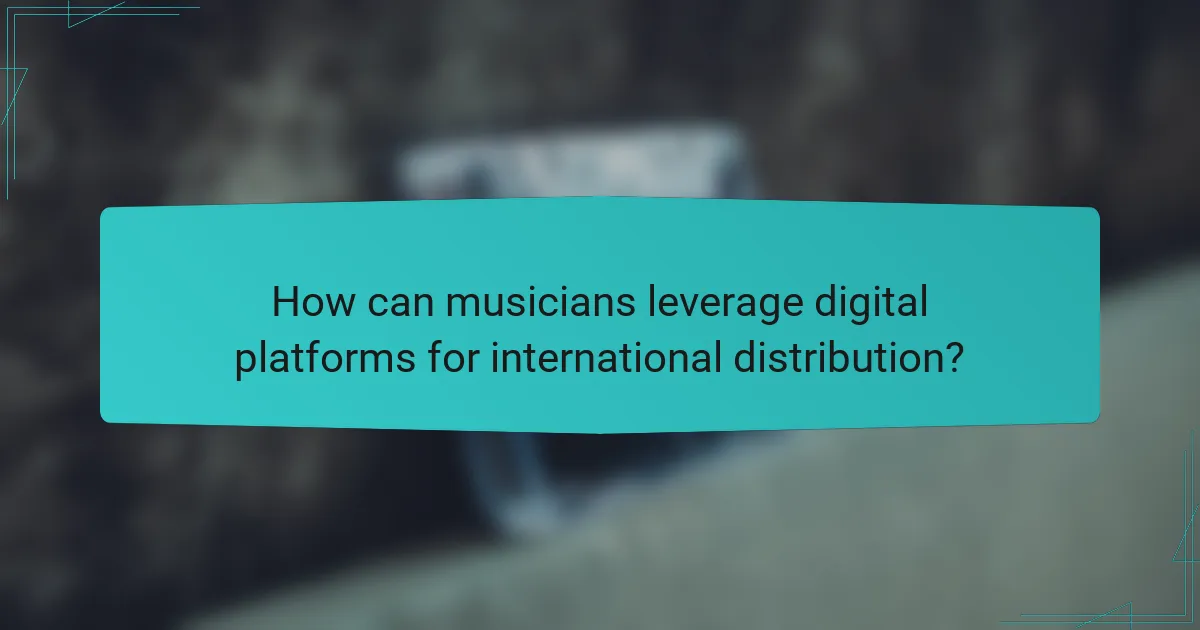
How can musicians leverage digital platforms for international distribution?
Musicians can effectively use digital platforms to reach global audiences by distributing their music through various online channels. This approach allows for wider exposure, increased sales opportunities, and the ability to connect with fans across different countries.
Understanding digital distribution channels
Digital distribution channels include platforms like Spotify, Apple Music, and Amazon Music, which allow musicians to upload their tracks and make them available worldwide. Each platform has its own audience and features, so selecting the right ones is crucial for maximizing reach.
Consider using aggregator services like DistroKid or TuneCore to simplify the process of getting your music onto multiple platforms. These services often charge a fee but can save time and effort, allowing you to focus on your music.
Key considerations for international reach
When aiming for international distribution, consider the licensing requirements and regional regulations that may affect your music. Different countries have varying rules regarding copyright, royalties, and distribution rights, which can impact your earnings and exposure.
Additionally, be aware of cultural differences that may influence how your music is received. Tailoring your marketing strategies to fit local tastes can enhance your chances of success in diverse markets.
Maximizing revenue through digital platforms
To maximize revenue, musicians should explore multiple income streams available through digital platforms, such as streaming royalties, digital downloads, and merchandise sales. Each platform offers different payout structures, so understanding these can help you optimize your earnings.
For instance, streaming services typically pay artists a fraction of a cent per stream, while digital downloads may yield higher one-time payments. Balancing your presence across various platforms can help you tap into different revenue sources.
Common pitfalls to avoid
One common pitfall is neglecting to read the terms and conditions of digital distribution agreements. These agreements can include clauses that affect your rights and earnings, so it’s essential to understand what you are signing.
Another mistake is failing to promote your music effectively. Simply uploading your tracks is not enough; active marketing through social media, email newsletters, and collaborations can significantly boost your visibility and fan engagement.

